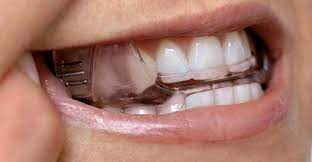
Obstructive Sleep Apnea is the most common type of a sleep disorder in which the soft tissues of the mouth and throat expand and relax during sleep. The relaxed muscles can block the airway, preventing air from reaching the lungs. This, in turn, lowers the blood oxygen content and can cause the user to wake up gasping or choking for breath and is characterized by repetitive episodes of partial obstruction or complete obstruction of the patient’s airway during sleep, typically last 20 to 40 seconds despite the effort to breathe, and is usually associated with a reduction in blood oxygen saturation (SaO2).
Respiratory sound caused by air rushing through the narrow passage and stimulating the soft palate, uvula, throat walls And tongue to vibrate collectively cause snoring.
The snoring prevalence in adult male and adult female is 29.5 % and 8.9% respectively. The Overall prevalence of habitual snoring in children is 11.2% (boys, 12.4%; girls, 8.5%).
The most common type of apnea and is characterized by repetitive episodes of partial obstruction or complete obstruction of the patient’s airway during sleep, despite the effort to breathe, and is usually associated with a reduction in blood oxygen saturation (SaO2).
Repetitive reduction of airflow is termed hypopnea, and complete cessation of airflow is termed apnea. These episodes of decreased breathing, called apneas (literally meaning “without breath”), typically last 20 to 40 seconds.
The level of OSA is described by the Apnea-Hypopnea Index (AHI), a count of respiratory events divided by the time of the testing.
The Prevalence of OSA in male and females is 9% and 4% respectively, although prevalence of OSA in children is less i.e., 2 to 3% and 10 to 20% in habitually snoring children.
In India, in age group of 35 to 65 years- 9.3% i.e., 40% suffer from OSA. Men are prone to have obstructive sleep
apnea than women before 50 years of age. After age of 50, the risk is same in both men and women.
SYMPTOMS
There are several common sleep and daytime symptoms associated with OSA though patients vary in the number and combination of symptoms reported. During sleep, snoring is one of the most common symptoms. Common daytime symptoms of OSA include excessive daytime sleepiness or fatigue. Excessive daytime sleepiness is feeling very drowsy or very sleepy at times whereas fatigue is feeling tired, low on energy, and unmotivated. Feeling unrefreshed despite getting the recommended 7 to 9 hours of sleep is also a symptom.
COMORBIDITIES & Risk Factors
There is a correlation between increased risk of OSA and obesity (BMI > 30 kg/m2 ) and its correlates of greater waist-to-hip ratio and neck circumference.OSA is associated with a number of comorbid conditions including stroke, myocardial infarction, hypertension, hyperlipidemia, glucose intolerance, diabetes, arrhythmias including atrial fibrillation, pulmonary hypertension, congestive heart failure, and depression. Patients with moderate or severe OSA are at higher risk of these comorbid conditions.Patients with cardiovascular disease have a very high prevalence of OSA: hypertension (83% mild to 30% moderate to severe OSA), heart failure (55% to 12%), arrhythmias (50% to 20%), stroke (75% to 57%), and coronary-heart disease (65% to 38%). Increased awareness and early diagnosis of OSA is critical to reducing cardiovascular disease burden.
The risk of OSA is influenced by unmodifiable and modifiable factors. Unmodifiable risk factors include male sex, age, and race. Genetic predisposition or a family history of OSA as well as cranial facial anatomy resulting in narrow airways may impart higher risk of OSA. Modifiable risk factors include obesity, medications that cause muscle relaxation and narrowing of the airway (opiates, benzodiazepines, alcohol), endocrine disorders (hypothyroidism, polycystic ovarian syndrome), smoking, and nasal congestion or obstruction.
.
Screening
Screening patients for OSA starts with a good sleep history to identify symptoms, risk factors, and comorbid conditions, as well as a physical examination for OSA-related features. The dentist can elucidate and gather findings as part of an immense screening process and should refer a suspected patient of a sleep apnea to the physician for analysis and proper medical diagnosis.
For diagnosis of OSA,Polysomnography (PSG) is considered the gold standard test. The test involves overnight recording of sleep, breathing pattern and oxygenation. The study records analysis of apnea, oxygen saturation, body position change, heart rate, snoring and sleep staging.
However nowadays home sleep apnea testing options are also available .
Treatment of Obstructive Sleep Apnea
- Positive airway pressure (PAP) Therapy
Continuous positive airway pressure (CPAP)
Auto Bilevel positive airway pressure (BiPAP)
- Oral Appliances
Mandibular advancement devices (MADs)
Tongue retaining Devices
- Surgery
Uvulopalatopharyngoplasty (UPPP)
Adenotonsillectomy
Nasal Surgery
Maxillomandibular Advancement.
- Electric Stimulation
Neuromuscular electric stimulation
Hypoglossal nerve stimulation.
- Lasers
Oral appliance therapy
The gold-standard for OSA treatment was considered to be a positive airway pressure (PAP) therapy. Few patients using PAP can find the pressure too high, leading to PAP adherence question. Many studies have illustrated that OAs and PAP therapy were equivalent in improving daytime somnolence, quality-of-life indices, hypertension, neurocognitive function and cardiovascular mortality. Oral appliances, which include mandibular advancing oral appliances, tongue retaining devices, tongue posture training devices and soft palate lifter are usually effective options for OSA management in appropriately selected patients. American academy of sleep medicine recommends
“oral appliance for mild-to-moderate OSA and/or for patients with severe OSA who are unable to tolerate CPAP or refuse treatment with CPAP”.
Mandibular advancing oral appliances are intended to hold the mandible or the associated soft tissues ahead, following in an enlarged volume of the upper airway at the oropharyngeal level. Many types of OAs are used in the treatment of OSA in adults. The appliances vary based on the coupling design, mode of fabrication and activation, titration capability, degree of vertical opening, lateral jaw movement, whether they are custom made or prefabricated. Proper indications for each design should be considered. The patient undergoing oral appliance therapy should be educated of their SRBD intensity along with an understanding of the resulting apnea-hypopnea index (AHI), respiratory event index (REI), or respiratory disturbance index (RDI), from Objective sleep apnea testing.
ORAL APPLIANCE THERAPY
The primary oral appliance (OA) or mandibular advancement device (MAD).may be either an over-the-counter stock device or customized for individual patients. MADs come in various designs and materials, but most comprise upper and lower splints mounted over the dentition aseither a 1-piece monoblock or a 2-piece biblock . Connectors or blocks relate the upper and lower splints in a biblock to protrude the mandible in a forward position during sleep.
ORAL APPLIANCE EFFECTS ON AIRWAY
MADs work by pulling your lower jaw (mandible) forward. Moving your jaw forward also pulls your tongue forward, creating more space for airflow in the back of your throat. MADs fit over your teeth. Most come in two parts, one for your top teeth and one for your bottom. Screws, hinges and adapted rubber bands connect the top and bottom, allowing you to pull the lower part of the device that controls your jaw forward. Others have independent interchangeable arches
Clinical follow up
Trained dentists in sleep practice should follow-up patients using MADs to reduce dental side effects and occlusal changes. Initial side effects are transient and reversible.Close monitoring and coaching through the initial period may improve compliance.
For initial comfort, mandibular advancement is 75% of maximum protrusion. Clinical titration with an adaptation period increases the achievable protrusion and improves treatment response. Clinical titration should be followed by overnight PSG. Subjective feedback is not sufficient to determine the optimal setting of MAD. Post-PSG titration has been shown to improve MAD efficacy significantly.
ADVANTAGES
Advantages of mandibular advancing appliances are effective in mild to moderate OSA, easy to wear, portable,
power source not required, cost effective but MADs can predispose to transient , TMJ discomfort, increased salivation, losening of teeth and change in bite ,but the advantages outweigh the disadvantages on account of larger health benefits.
The writer is a Dentist and Dental Sleep Specialist. shabanowais@gmail.com




